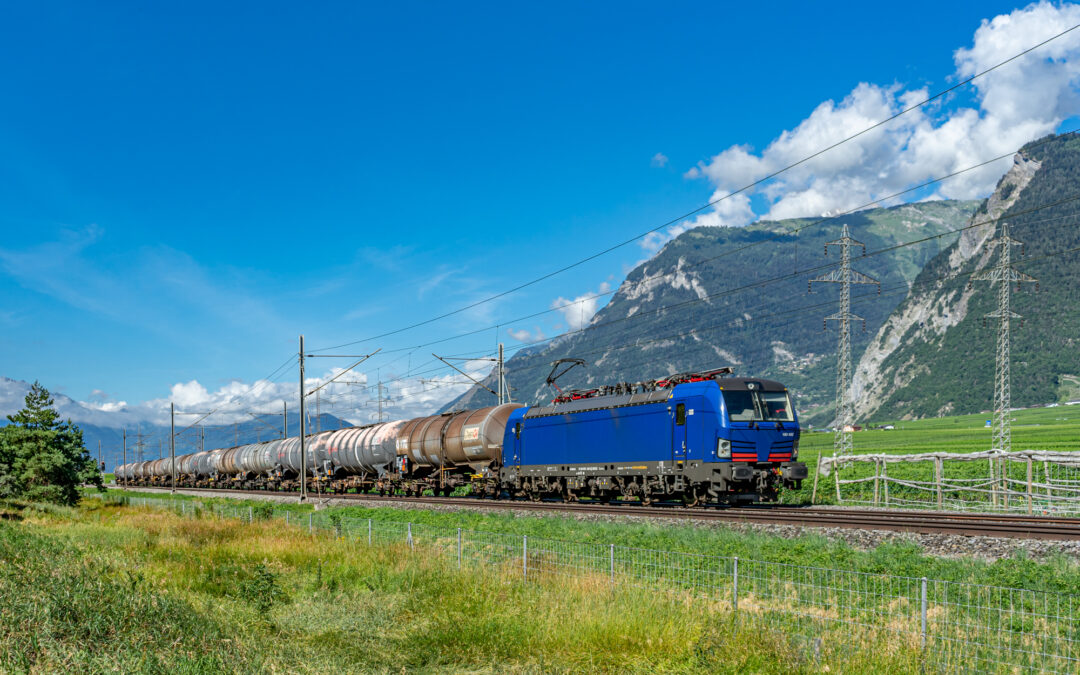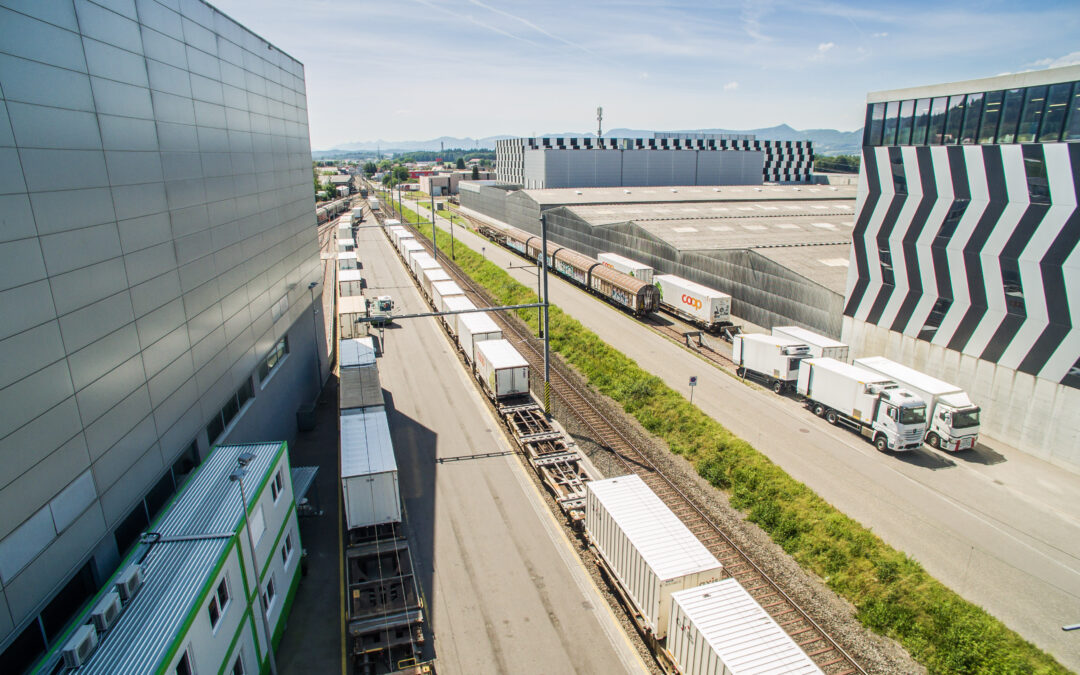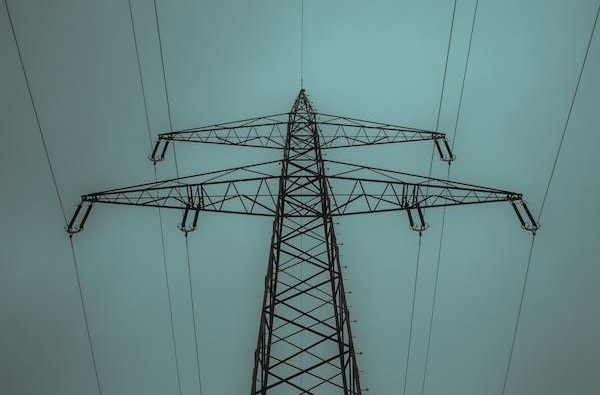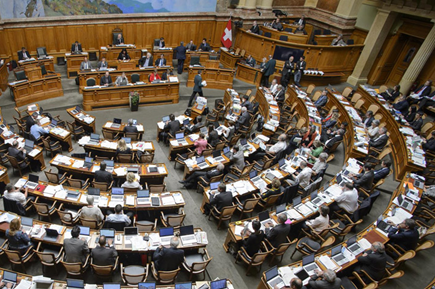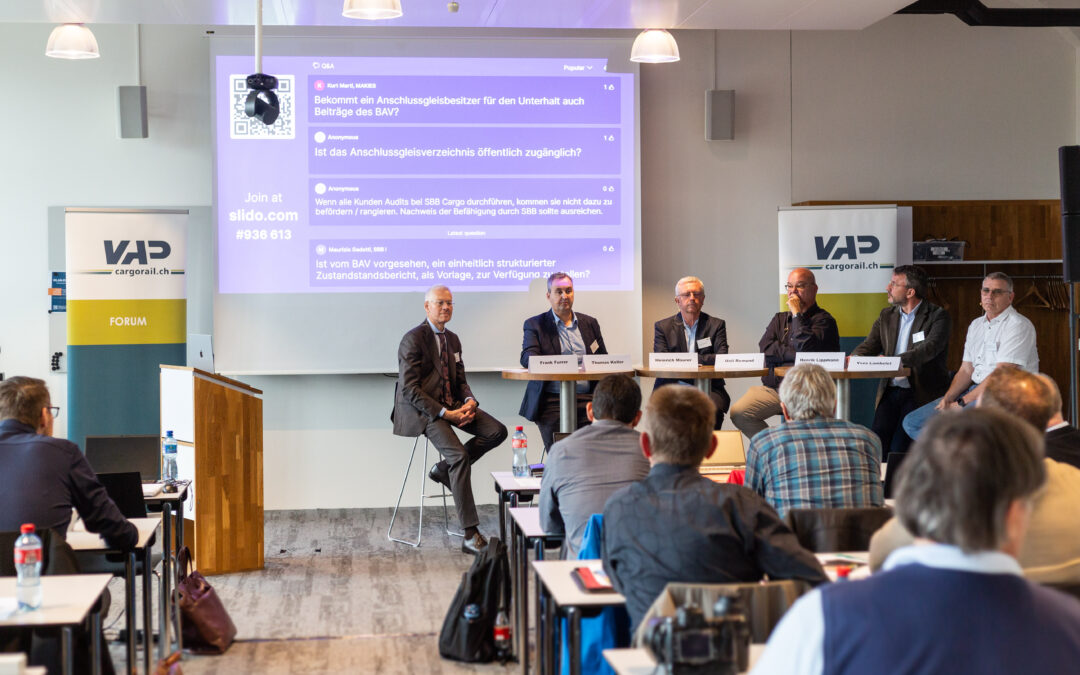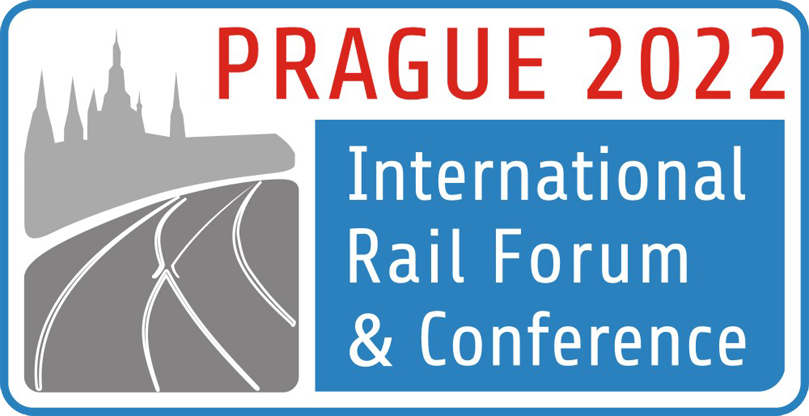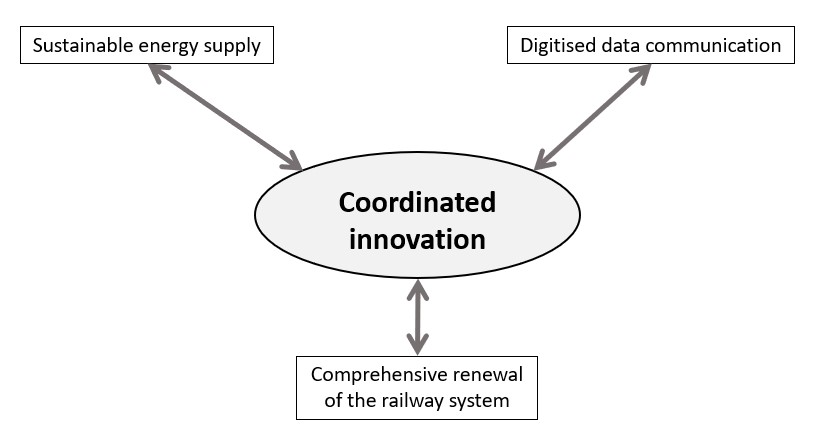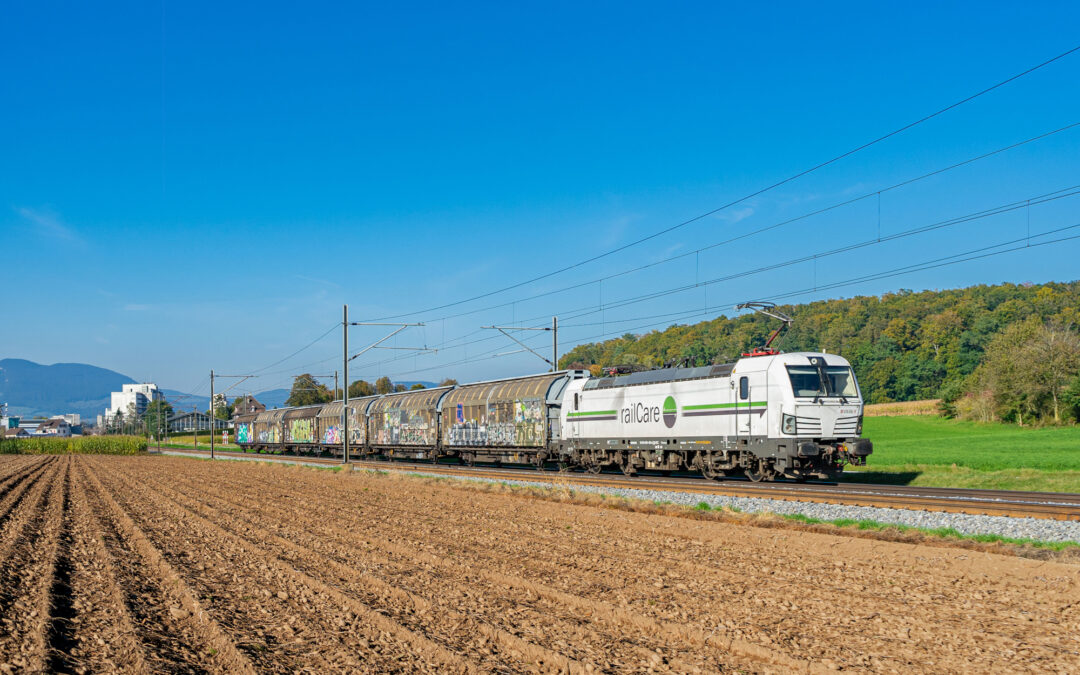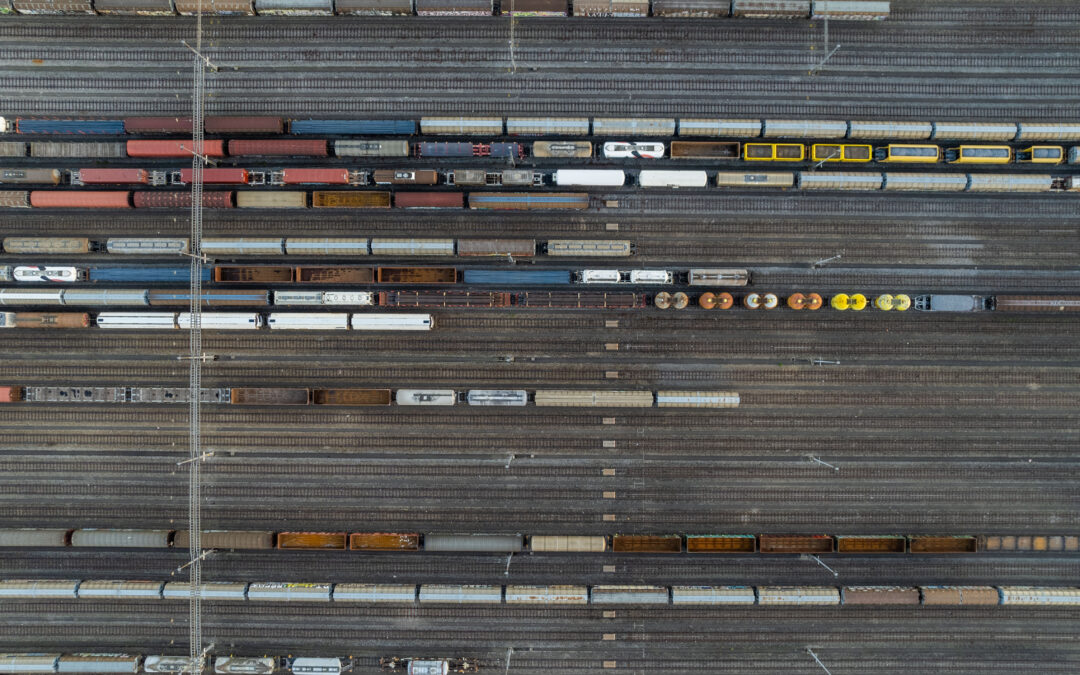[et_pb_section fb_built="1" _builder_version="4.16" global_colors_info="{}"][et_pb_row _builder_version="4.16" background_size="initial" background_position="top_left" background_repeat="repeat" global_colors_info="{}"][et_pb_column type="4_4" _builder_version="4.16" custom_padding="|||" global_colors_info="{}" custom_padding__hover="|||"][et_pb_text _builder_version="4.18.0" background_size="initial" background_position="top_left" background_repeat="repeat" global_colors_info="{}"]
Dr Heiko Fischer presides over the International Union of Wagon Keepers UIP. The former VTG boss talks to the VAP about the future of European rail freight transport and the digital transformation of the rail sector. He would like to see more enthusiasm for the latter and explains why he considers the discontinuation of single wagonload traffic in Switzerland to be fatal.
Dr Fischer, where do you see the biggest challenges and where do you see the levers for the European rail market?
There are quite a few. The railway infrastructure is outdated or in many places a patchwork quilt that has grown historically. There are still borders between the subsystems. Every year that nothing is done, the problem grows, because the infrastructure continues to age unwaveringly. This is where I see the adjusting screw in the coordination of expansion plans, relief routes and corresponding construction measures throughout Central Europe. It is true that the trans-European networks pursue this integrative approach. But secondary lines and fine distribution networks must not be excluded when it comes to investment allocation, expansion and renewal planning, train control systems and regulation.
I see a further control variable in the complete digitalisation of the railway sector, starting with the networking of the infrastructure via the rolling stock to the operational business. There should be a standardised logic with corresponding interfaces. As a result, electrification can take place in a measured and targeted manner. Lightly loaded routes could also be served by hydrogen-powered hybrid locomotives.
[/et_pb_text][et_pb_testimonial disabled_on="off|off|off" _builder_version="4.18.0" _module_preset="default" custom_margin="||15px||false|false" custom_padding="||15px||false|false" global_colors_info="{}"]
«Rail freight relies on public funding for certain urgencies, such as basic digitisation, infrastructure development, electrification, implementation of digital automatic coupling DAC and other time-critical leap innovations.»
[/et_pb_testimonial][et_pb_text _builder_version="4.18.0" background_size="initial" background_position="top_left" background_repeat="repeat" global_colors_info="{}"]
Available capital is also a cornerstone. The railway market does not only need sufficient private capital. For certain urgencies, it depends on public funds, for example for basic digitisation, infrastructure expansion, electrification, the implementation of the digital automatic coupler DAC and other time-critical leap innovations. Such investments are beyond the financial powers of the private sector and most state railways. After all, nobody wants to invest in technologies that will only bear fruit in the next decade, perhaps even with other players in the railway system. This brings me to another set screw: we also need an anchored economic understanding of the mechanisms of rail freight transport among governments, regulators and politicians. This requires a rethink on the part of all those involved in the system.
In what way?
The rail sector is not exactly known for thinking proactively and implementing new things quickly. Many see themselves as victims, be it of the past, of wrong decisions, of the road, of the weather or of anything else. In my opinion, that absolutely has to change. After all, we don't haul goods trains around because we enjoy it, but because we want to generate added value for shippers and our communities. The players in rail freight transport need to put the customer back in the centre of their attention and to be aware of their future needs. For the upcoming change to actually happen, we need more of a start-up mentality, a "can do" attitude.
What innovations have you driven forward at VTG in recent years, and which of them were groundbreaking?
VTG Connect spontaneously comes to mind. This telematics technology collects relevant data on the entire fleet and many transports. It creates the basis for efficient digital fleet management, because it makes data usable for customers, freight railways and maintenance purposes. With this innovation, we have, so to speak, launched the entry into real-time data transmission in freight transport as envisaged by the DAC.
What importance do you attach to the DAC in the future?
The DAC is a catalyst for the digital transformation of the rail sector. With it, a new control logic and real-time data flows can be mapped. We are a long way from that today. The DAC does more than automate the coupling process. It networks train drivers, cargo, cargo carriers and energy, i.e. electricity. The potential of this combined with new digital technologies is immense. The DAC is not only an intelligent train and load control system, but also a facilitator for other digitalisation initiatives such as digital data, train control and booking platforms.
[/et_pb_text][et_pb_testimonial disabled_on="off|off|off" _builder_version="4.18.0" _module_preset="default" custom_margin="||15px||false|false" custom_padding="||15px||false|false" global_colors_info="{}"]
«There will certainly be several platforms, because as before, each company will collect information that it cannot or may not share. One or even more of these platforms will emerge as central hubs that manage the operational railway business.»
[/et_pb_testimonial][et_pb_text _builder_version="4.18.0" background_size="initial" background_position="top_left" background_repeat="repeat" global_colors_info="{}"]
What role will these play in the future?
There will certainly be several platforms, because as before, each company will collect information that it cannot or may not share. One or even several of these platforms will emerge as central hubs that manage operational railway operations. As such, they will provide freight operators with reliable information that can be used to reduce the distances between trains, calculate time windows and put more tonnage on the track per unit of time. A pan-European electronic freight traffic control system must not come from a tech giant à la Google, but should develop from within the rail sector itself. In this way, we show innovative strength vis-à-vis other modes of transport.
Perhaps in the future there will even be a superordinate body like Eurocontrol for the central coordination of air traffic control. Such a cockpit could control European rail freight traffic, give the train drivers certain instructions, intervene if necessary and later allow autonomous trains to run. However, such quantum leaps are only possible if digital technologies with artificial intelligence are implemented and take effect. Only they bring dynamism and ensure the necessary speed, which is absolutely central to the success of the digital transformation.
How could rail freight transport in Europe be developed sustainably?
With something that brings the economic impact of freight transport down to a common denominator and to which all players commit. I can imagine that one day there will be a long-term master plan in the sense of a self-regulating yet binding declaration of intent. All participating state and non-state railways would have to co-sign it. This master plan could state that they are working together towards a modal shift. I would remind you of the General Contract of Use (GCU) of 2006, which regulates the interaction between wagon keepers and railway undertakings as wagon operators. The advantage of a supranational agreement without the character of law is that it can be supplemented or adapted quickly and easily. The accesses to the NRLA are the best example of what should not happen: The community of railway states, including Switzerland, has committed itself to expanding the north-south axis. When Switzerland opened the NRLA tunnel, other states had not even started planning. A master plan for European freight transport could make this intention more binding and make it clear that the Green Deal and modal shift goals are meant seriously. Today it is still a pipe dream. Most of the time, everyone agrees with the basic demands. But as soon as it comes to working out something concrete from a single source, opinions diverge.
What do you think of the Federal Council's report on 'Rail Freight Transport in the Area'? What would it mean if the Federal Council abolished it?
In my opinion, that would be the biggest mistake in transport policy for decades. Switzerland proves that wagonload traffic works. However, it is still too expensive. But if train formation and separation are automatic, the train line is digitally controlled and the market benefits from the many advantages of digital offers, then the costs will also go down - and the need for subsidies will decrease. The Federal Council should think about how to make the offers more attractive for freight rail customers. To call the whole thing off even before digitalisation bears fruit would be criminal. Transferring rail freight to trucks also costs money and not every freight can be containerised for block trains. In my opinion, the Swiss government should be more confident in this area. Those who lack courage have already lost.
We at the VAP are members of the UIP. How would you describe the VAP?
It is a valuable member association of our European wagon keeper family. I perceive it as innovative and opinionated. Because of its unique membership structure, it has a special weight with us. The VAP represents not only the five largest Swiss wagon keepers, but also the interests of shippers, sidings and representatives of multimodal logistics chains. This diversity generates impact and a wealth of ideas among us, and I consider it a valuable strength. With its member diversity, the VAP can focus its demands more holistically on the users and place them with greater authority. I support the VAP's client-centred approach, which involves the end-user in the discussion and decision-making process. Europe can benefit from the Swiss experience with wagonload traffic or the performance-based heavy vehicle charge. It is often seen as a "minilab" that mirrors issues for us. Furthermore, the VAP shows us in an exemplary way how to convince the population or how to shape something positively as a community.
What can the VAP do better?
Better is always possible. My appeal is not only to the VAP, but to all associations and people involved in transport policy. We need committed people who are willing to formulate interests with a view to the future. There are enough of those who think in terms of quarterly balance sheets. But that is no way to win the future.
What do you wish for this future?
More interest, more confidence. More enthusiasm. Shippers should be eager to put even more tonnes on the rails. This is the only way we can achieve the ambitious modal shift and climate targets. The population should realise how important rail freight transport is - and that it costs money. After all, an unchecked flood of lorries is not an alternative. I hope that you from the VAP and we from the UIP will continue to stand up for this departure day after day.
Dr Fischer, thank you very much for the informative interview.
[/et_pb_text][et_pb_text _builder_version="4.18.0" background_size="initial" background_position="top_left" background_repeat="repeat" global_colors_info="{}"]
|
Dr. Heiko Fischer
Dr. Heiko Fischer served VTG for a total of more than 25 years until 2021, including more than 17 years as Chairman of the Executive Board. Since 2015, he has been President of the umbrella organization International Union of Wagon Keepers UIP, based in Brussels, as he was from 2004 to 2007. This represents more than 250 freight wagon keepers and maintenance centres with more than 223,000 freight wagons, which cover 50% of the tonne-kilometres in European rail freight transport. Dr Heiko Fischer's former employer VTG AG operates the largest private freight car fleet in Europe with around 88,500 rail freight cars. In addition to hiring out freight wagons and tank containers, VTG offers multimodal logistics services and integrated digital solutions.
|
[/et_pb_text][/et_pb_column][/et_pb_row][/et_pb_section][et_pb_section fb_built="1" _builder_version="4.16" _module_preset="default" locked="on" global_colors_info="{}"][et_pb_row _builder_version="4.16" _module_preset="default" global_colors_info="{}"][et_pb_column type="4_4" _builder_version="4.16" _module_preset="default" global_colors_info="{}"][et_pb_post_nav prev_text="Vorheriger Artikel" next_text="Nächster Artikel" _builder_version="4.16" _module_preset="default" global_colors_info="{}"][/et_pb_post_nav][/et_pb_column][/et_pb_row][/et_pb_section]
